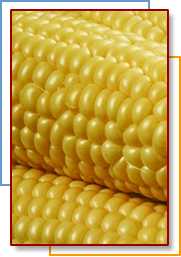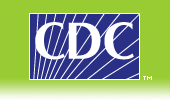
Because of its high protein and carbohydrate content, corn has been an
important nutritional resource for thousands of years. Corn can be traced
back to Mexican or central American cultures as early as 3400 B.C., and
has become a staple among Native American civilizations throughout the
Western Hemisphere. Today, corn has less starch and is sweeter. The
sweetness accounts for its popularity among Americans. Americans consume
about 25 pounds of corn per person annually, most of which is frozen or
canned. A good thing about corn is that frozen and canned corn has about
the same nutritional value as fresh corn. So, for the many Americans who
are not able to get fresh corn, they can still enjoy frozen or canned for
nearly the same nutritional value as fresh corn.
| |
| Corn |
Serving Size
1/2 cup cooked (82g)
|
Amount Per Serving |
% Daily Value |
| Calories 90 |
|
| Calories
from Fat 10 |
|
| Total Fat 1g |
2% |
|
Saturated Fat 0g |
0% |
| Cholesterol
0mg |
0% |
| Sodium 15mg |
1% |
| Total
Carbohydrate 21g |
7% |
| Dietary
Fiber 2g |
7% |
| Sugars
3g |
|
| Protein 3g |
|
| Vitamin
A |
0% |
| Vitamin C |
8% |
| Calcium |
0% |
| Iron |
2% |
* Percent Daily Values are based on a
2,000 calorie diet.
|
|
| |
|
There are more than two hundred varieties of corn. All are good sources
of vitamin C.
Make sure the husks are green, tight and fresh looking. Pull the husk
open to make sure that the ear contains tightly packed rows of plump
kernels. The kernels should be smaller at the tip of each ear. Large
kernels at the tip is a sign of overmaturity. If you pinch a kernel, milky
juice should spurt out. Corn should be stored in a cool area. Warmth
causes the sugar content of corn to be converted into starch. This process
will cause the ears to become less sweet.
If the corn is not cooked shortly after it is purchased, then it should
be stored in refrigerator. Refrigeration helps the corn retain its sugar
and vitamin C content. If you buy unhusked corn, keep it in its husk until
you are ready to cook it. This will help the corn retain its moisture
content. To fully enjoy the great taste of sweet corn, cook it as soon as
possible. The sooner the better is a good "rule of thumb."
Recipes

Corn Salad
Makes 6 servings.
Ingredients
3 cups canned corn or thawed frozen corn
2 Tbsp. olive oil
1 cup minced red onion
2 tsp. chili powder
1 tsp. cumin
1 green bell pepper, seeded, and diced
1 red bell pepper, seeded and diced
1–1/2 cups tomatoes, seeded and diced
4 Tbsp. chopped fresh cilantro
3 Tbsp. cider vinegar
salt and pepper to taste
In a small sautè pan, warm olive oil over medium heat. Add onion and
sautè for a few minutes. Add chili powder and cumin and sautè for 1
minute longer. In a serving bowl, combine corn, bell peppers, tomatoes,
and cooled onions. Toss to mix. Add cilantro and vinegar. Toss well to
combine. Season to taste with salt and pepper, and toss again. This recipe
is best served at room temperature.
Nutritional analysis per serving: Calories 138, Total Fat 5g, Saturated Fat 0.7g,
Cholesterol 0.0g, **Sodium 20mg, Carbohydrates 23g, Fiber 4g, Protein 4g.
Protein 10%, Carbohydrates 59%, Fat 31%.
**without added salt to taste
Find more in our
recipe database!
|



